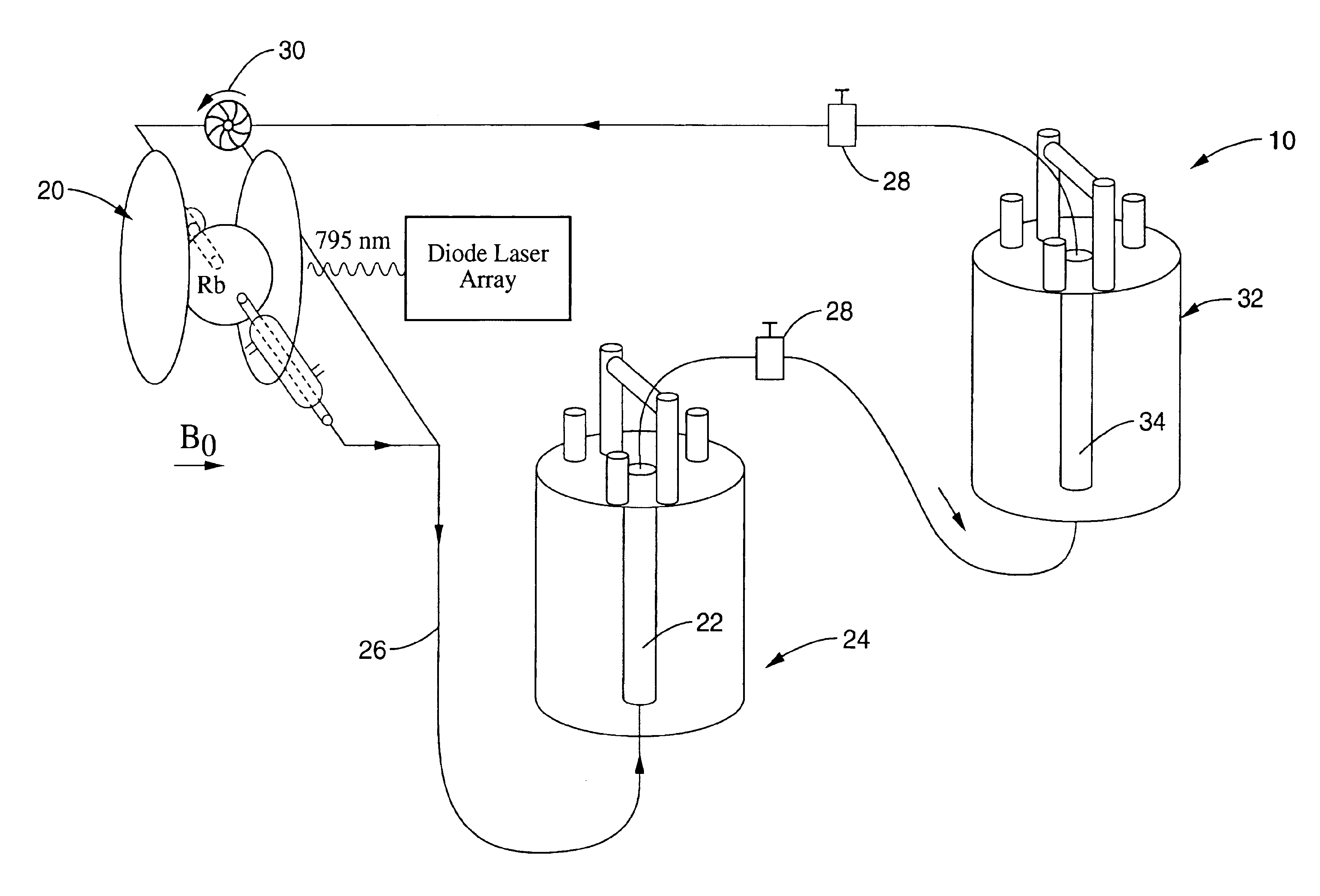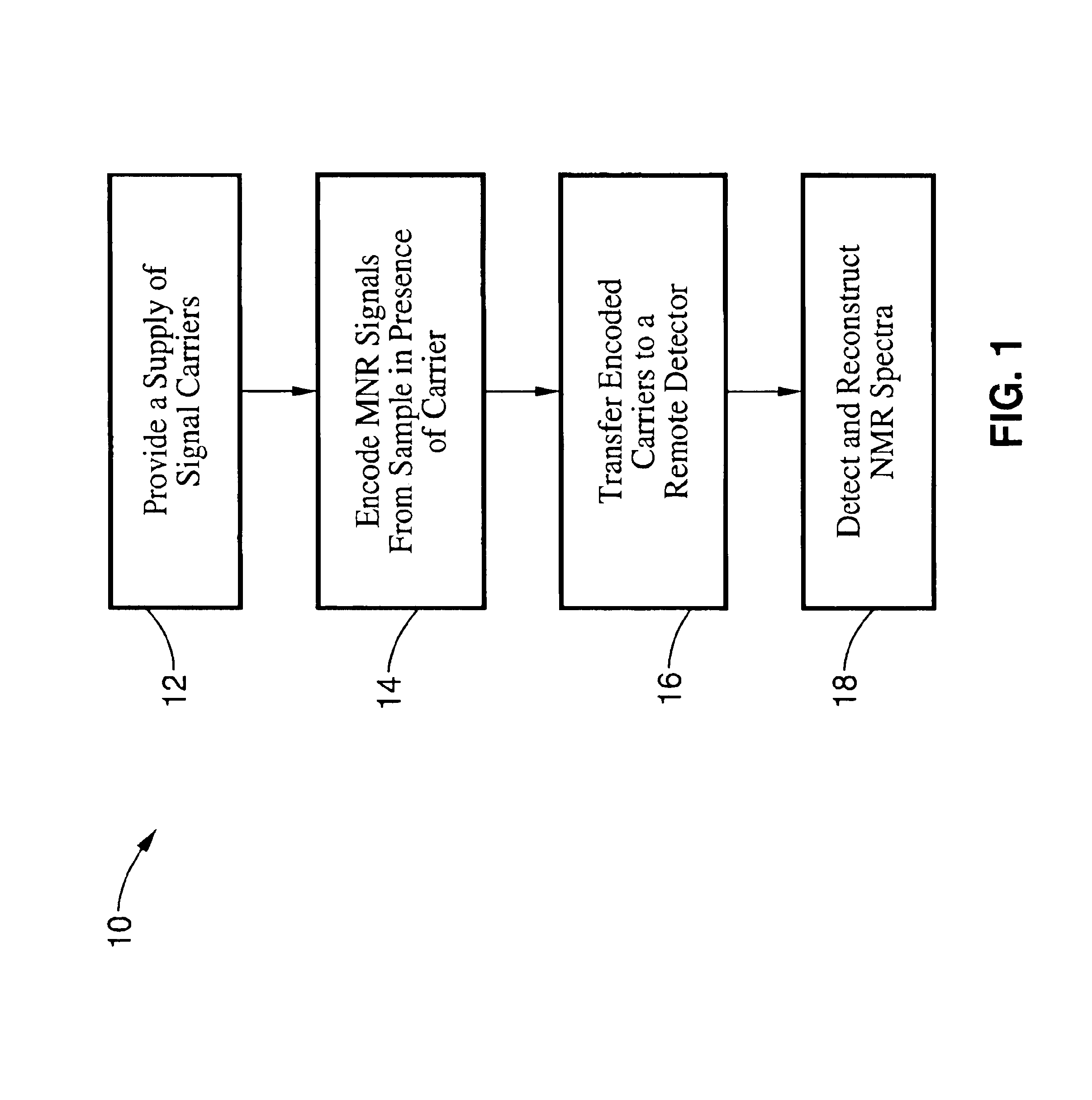Remote NMR/MRI detection of laser polarized gases
a laser polarized gas and remote detection technology, applied in the field of nuclear magnetic resonance spectroscopy, can solve the problems of inability to detect laser polarized gases, device limitations, and insensitivity of nmr, and achieve the effects of increasing the signal to noise ratio, maximizing the filling factor, and high spin density
- Summary
- Abstract
- Description
- Claims
- Application Information
AI Technical Summary
Benefits of technology
Problems solved by technology
Method used
Image
Examples
example 1
[0095]A preliminary test of the concept of remote detection used an apparatus in which both an encoding coil and detection coil were controlled within the same NMR spectrometer with the same magnetic field and had a minimal travel distance between the encoding and detection coils. The high field encoding probe that was used contains two coils that are separated by 2 cm, center to center, and by a copper sheet, which serves as an rf shield. The encoding and detection coils were each controlled by a separate x-channel of a Varian Infinity Plus spectrometer tuned to 83.25 MHz.
[0096]Hyperpolarized 129Xe, polarized to 1-5%, was produced using a commercial polarizer from MITI. After the polarized 129Xe gas was produced, the flow was directed through the encoding and detecting coils sequentially and was later lost into the laboratory atmosphere or was alternatively returned to the polarizer. Gas flow rate was controlled using a pressure differential through a silver coated needle valve and...
example 2
[0102]Using an apparatus shown generally in FIG. 3, a low field encoding and high field detecting procedure was performed. In this procedure, two dimensional images were obtained from a sample and Xe gas that was encoded at 0.008 T and detected at 4 T. The experimental apparatus and pulse sequence were identical to that in Example 1 with the exception that frequency encoding gradients were added between the two encoding 90° pulses. The travel time was set to 10 seconds corresponding to a flow rate of ˜0.6 ml / s.
[0103]In order for a remote image to be properly reconstructed in the detection coil, preferably all of the encoded gas will be detected in the detection coil. The processes of diffusion and flow allow the encoded sample to mix with un-encoded gas and to spatially spread out along the length of tubing. The total distance traveled is approximately 5 m, but the movement of the encoded sample is better measured in terms of travel time.
[0104]The traveling time Tt is preferably det...
PUM
 Login to View More
Login to View More Abstract
Description
Claims
Application Information
 Login to View More
Login to View More - R&D
- Intellectual Property
- Life Sciences
- Materials
- Tech Scout
- Unparalleled Data Quality
- Higher Quality Content
- 60% Fewer Hallucinations
Browse by: Latest US Patents, China's latest patents, Technical Efficacy Thesaurus, Application Domain, Technology Topic, Popular Technical Reports.
© 2025 PatSnap. All rights reserved.Legal|Privacy policy|Modern Slavery Act Transparency Statement|Sitemap|About US| Contact US: help@patsnap.com



